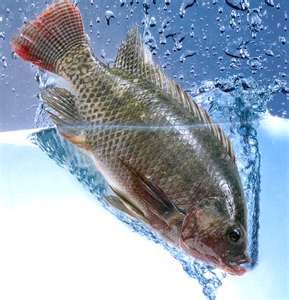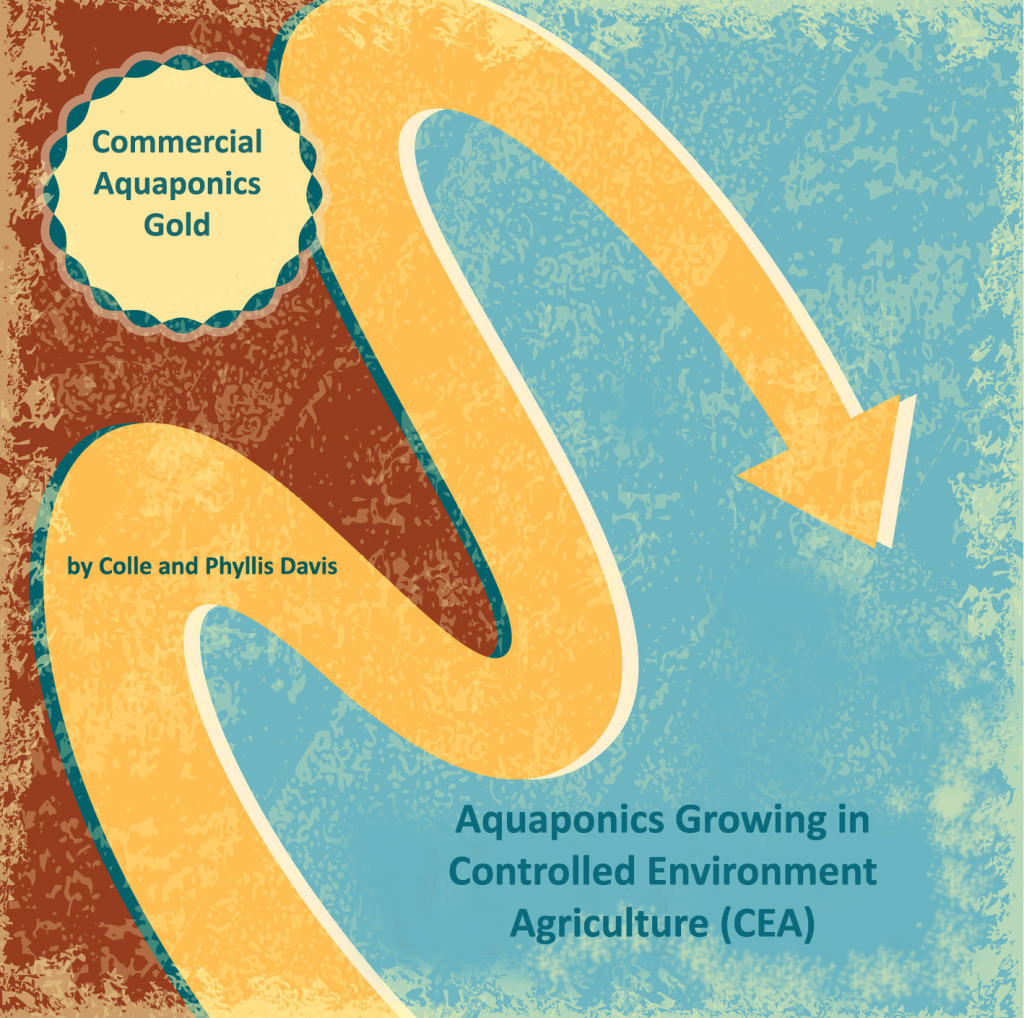Organic Commercial Aquaponics
-by Colle and Phyllis Davis
 Aquaponics is a relatively NEW TECHNOLOGY and the laws and rulings are changing. Please check with your county and state regulations for their regulations and rules for food they consider to be be organically grown if you are interested in receiving organic certification for selling food grown in Portable Farms.
Aquaponics is a relatively NEW TECHNOLOGY and the laws and rulings are changing. Please check with your county and state regulations for their regulations and rules for food they consider to be be organically grown if you are interested in receiving organic certification for selling food grown in Portable Farms.
The most amazing and delightful feature of organic aquaponics is you have no choice but to be organic. After all, harsh chemicals or pesticides would instantly kill the fish in the tanks.
The USDA recently upgraded the requirements for certification and labeling your production as Locally Grown, Pesticide Free is far less expensive and is what people are requesting. The rest of this article on organic can be see as locally grown, pesticide free for easier understanding.
The technology of aquaponics, if done correctly, is by itself friendly and healthy to humans, fish and plants. The installations can be certified organic the moment they are operational.
With hydroponics, the use of inorganic compounds and chemicals are used when growing in just ‘water and nutrients’. Even pesticides can be used. Organic hydroponics still produces a waste product that the US Government EPA says must be treated as a hazardous waste.
Hear Colle Davis, Lead Inventor, Portable Farms Aquaponics Systems, talk about commercial aquaponics and his book, Commercial Aquaponics GOLD.
- Commercial Aquaponics Gold, EBOOK. For more information and to purchase, CLICK HERE.
- This comprehensive information about commercial aquaponics provides you will all the facts you’ll need to make an informed business decision about commercial aquaponics growing in controlled environment agricultural (CEA).
- We’re also offering TWO FREE BONUSES with the purchase of Commercial Aquaponics GOLD: 1) A formal ten-step strategy business plan template designed specifically for commercial aquaponics growing to present to funders and, 2) PFAS LLC’s Executive Summary showing production and operating costs, profits and best-produce choices to achieve the shortest Return on Investment.
 Aquaponics is different because the fish must be taken into consideration and nearly everything that will kill bugs will also kill fish. No insecticides (not even organic pesticides) can be used on the plants or you will kill the fish. The ‘soil’ never has to be fumigated. There is no crop rotation and the installations can be next to the consumer outlet.
Aquaponics is different because the fish must be taken into consideration and nearly everything that will kill bugs will also kill fish. No insecticides (not even organic pesticides) can be used on the plants or you will kill the fish. The ‘soil’ never has to be fumigated. There is no crop rotation and the installations can be next to the consumer outlet.
The price differential between conventionally grown (read scary) food and organic food is high enough to encourage more and more producers to switch to organic methods. Now add to that fact that organic food that can be grown very near the consumer and the economics of organic aquaponics becomes VERY compelling. The transportation cost of produce is often half of price the consumers are paying for the vegetables.
With climatically adapted structures, organic aquaponics can supply the local markets with many tables vegetables and fish and supply healthy produce on a year round basis at a very competitive price. The price differential is often the size of the profit margin.
Let’s add up all the advantages of organic commercial aquaponics to see how it can impact the bottom line of those investors smart enough to jump in and begin to reap the benefits:
- Year round food production
- (Organic) vegetables
- Locally grown
- Pesticide free
- Custom orders available to customers
- NO transportation costs
- Local labor force of semi-skilled people needed
- Known operating expenses such as electrical power and water
- No engineers needed
- Staff training available and required
- All components readily available
- Remote monitoring available
Now the cost to get into the game.
Tilapia – the fish most commonly used in the Northern Hemisphere. The Southern Hemisphere raises a white perch or beramundi.
A small commercial aquaponics installation contains at least 3,000 to 5,000 sq ft (300 to 500 m2) to be viable. The following number DO NOT CONSIDER land cost. A truly viable commercial installation is in the 8,000 to 10,000 sq ft (800 to 1000 m2) size and has a cost of US$250,000 to $300,000 turnkey cost with a 3 to 5 year ROI. The climatically adapted structure is the most costly capital expense UNLESS an existing building is used. Converting a warehouse to aquaponics transfers initial capital cost to operating costs.
A smaller 3,000 sq ft (300 m2) installation to start will be in the US$90,000 to US$130,000. The scaling of costs is not linear. The ROI on this small installation can actually be shorter because the owner is nearly always the person doing the most work. The labor costs are lower because only two people have to be trained to operate the installation.
First step: Do your market survey to see who will actually buy everything you produce at premium prices.
Next step: Get the money together.
Step three: Take the Aquaponics University Portable Farms® Aquaponics Systems Course©, we’ll credit the cost of the course to your order of twenty or more PFAS Kits.
Subdivision farming: http://fortune.com/2015/05/21/commercial-farming-in-your-subdivision/
http://www.huffingtonpost.com/2015/06/03/organic-agriculture-more-profitable_n_7497018.html

